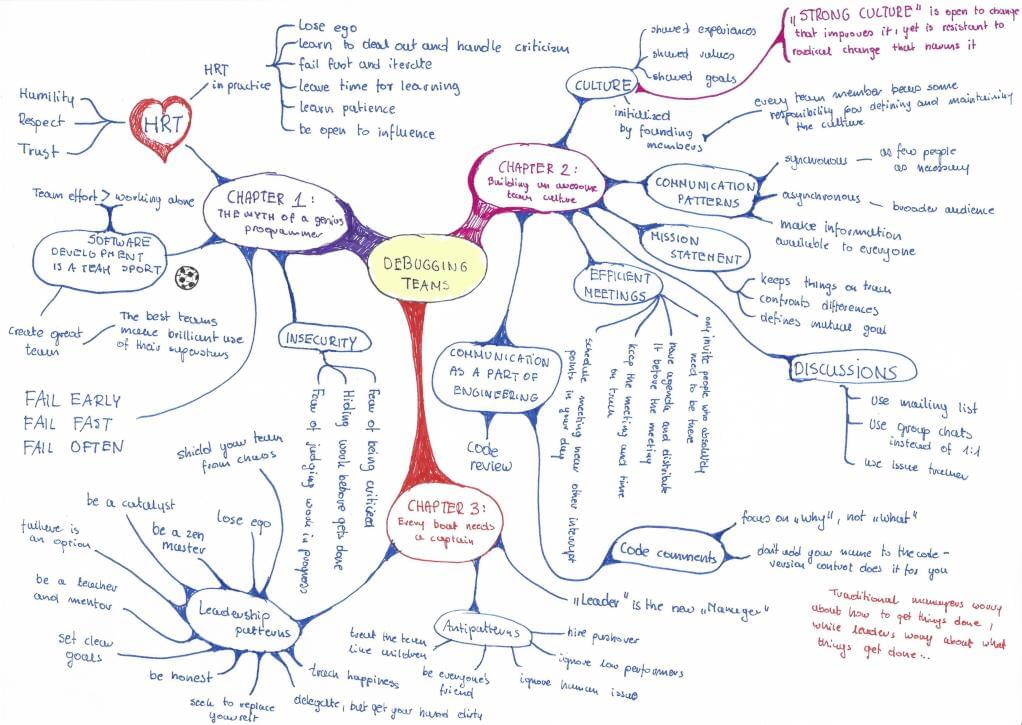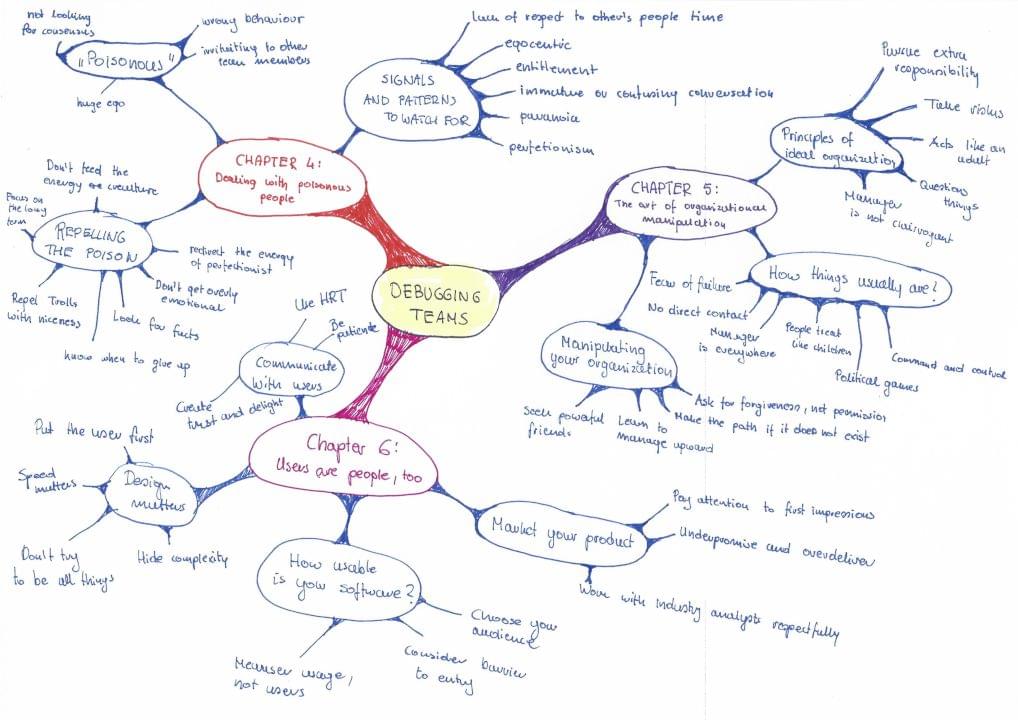Debugging Teams - book review
"Geniuses still make mistakes and having brilliant ideas and elite programming skills don’t guarantee that your software will be a hit. What’s going to make or break your career is how well you collaborate with others", say Brian Fitzpatrick and Ben Collins-Sussman in their book "Debugging Teams. Better productivity through collaboration". It shows that crafting the ability to collaborate is equally important as learning new programming languages and mastering the ones we already know. Let’s take a quick look at how this book can help us to become a better team player and a better team leader.
What’s inside?
Chapter one (The Myth of the Genius Programmer) focuses on software development as a team sport discipline. It debunks a myth of a so-called Genius Programmer, and it explains the role of great teams and their leaders in collective achievements. It also introduces three principles of social skills: Humility, Respect, and Trust. It explains how to use these principles in practice to achieve the following:
lose your ego
learn to deal out and handle criticism
fail fast, iterate, and recover
leave time for learning and improving
learn patience
be open to influence
Chapter two (Building an Awesome Team Culture) focuses on building a solid and healthy team culture. It explains that team culture is "a set of shared experiences, values and goals that are unique to every engineering team." A "strong culture," by definition, is open to any changes that improve it, yet is resistant to any radical change that harms it. It explains how to initialize the culture development process, how to maintain it and improve it cooperatively with other team members. We can also learn about communication patterns of successful cultures. These principles apply to synchronous and asynchronous communication, and they explain the importance of making all information visible to everyone.
There is also a section related to mission statements as something opposite to the overhyped marketing-speak statements. Authors prove that preparing an accurate mission statement for the team helps to find all differences and agree on the product’s development direction.
The last part of this chapter focuses on efficient communication inside the team. It covers topics like running productive meetings, working in geographically distributed teams, or making the day-to-day discussions and communication simple.
Chapter three (Every Boat Needs a Captain) focuses on the role of a leader in the team. It compares bad managers versus servant leaders and shows the impact both types make on the team and organization growth. Authors also share a huge list of antipatterns and leadership patterns worth following. They explain the role of a great leader, his/her duties, challenges, or impact, to name a few. This chapter also describes how to work with different people and their unique motivations and abilities.
Chapter four (Dealing with Poisonous People) explains the importance of preventing poisonous people from destroying the team culture you and your team members built. It describes a few different destructive behaviors that put your team’s integrity in risk. People with a huge ego, behaving immaturely, unrespectful to other’s people time - these are a few of the signals and patterns you should watch for. This chapter also gives you a few principles and tricks on how to fix harmful behavior - we have to assume that some people may not be aware that their behavior is wrong.
Chapter five (The Art of Organizational Manipulation) describes the difference between an ideal organization (unafraid to take the risk, everyone behaves like an adult, extra responsibility pursued) and a typical workplace with micromanagement, fear of failure, political games, managers that have to take part in every conversation, and infamous command and control management model. It explains how to influence a positive change starting from your team up to the organization level.
The final chapter (Users Are People, Too) shows how to apply all previous principles and techniques at the customer communication level. The development teams don’t build products for their own - they build software for the end users. It’s important to understand that the organization growth is correlated with the benefits that user get from using our software. (It shows the importance of measuring a real usage, not the number of users.) Being patient, helpful, communicating with HRT principles creates trust and engagement.
What have I learned?
This short review does not cover every detail of this book. It’s not that long, but it contains a lot of useful information, presented in a very easy-to-consume and anecdotal style. It confirmed that:
building strong and healthy teams is not a simple job,
collective effort in software development can produce better results than single person excellent performance,
dealing with people is hard and applying HRT principles helps to build strong relationships,
debugging teams is a process that never ends.

Debugging Teams: Better Productivity Through Collaboration
In the course of their 20+-year engineering careers, authors Brian Fitzpatrick and Ben Collins-Sussman have picked up a treasure trove of wisdom and anecdotes about how successful teams work together. Their conclusion? Even among people who have spent decades learning the technical side of their jobs, most haven't really focused on the human component. Learning to collaborate is just as important to success. If you invest in the "soft skills" of your job, you can have a much greater impact for the same amount of effort. (source: amazon.com)
Kindle ebookBuy paperbackTry Amazon Unlimited






0 Comments